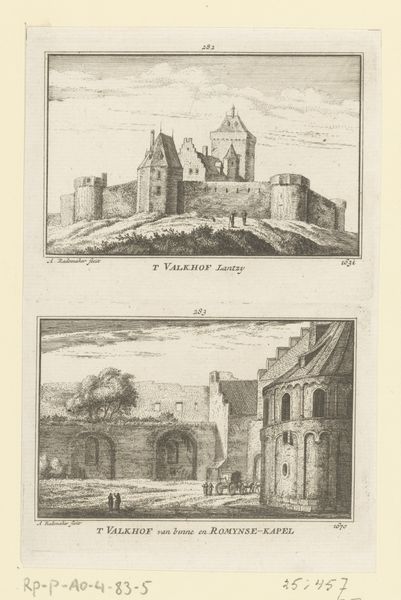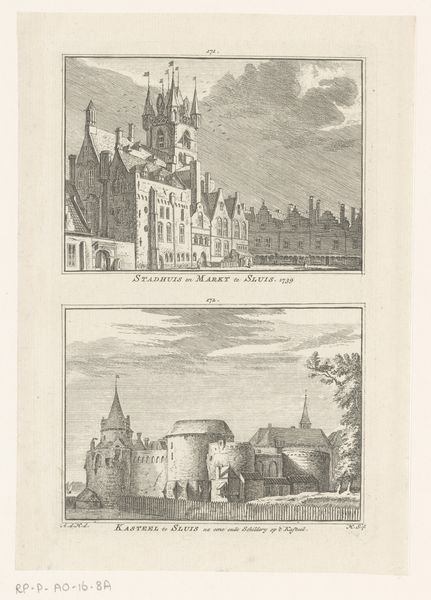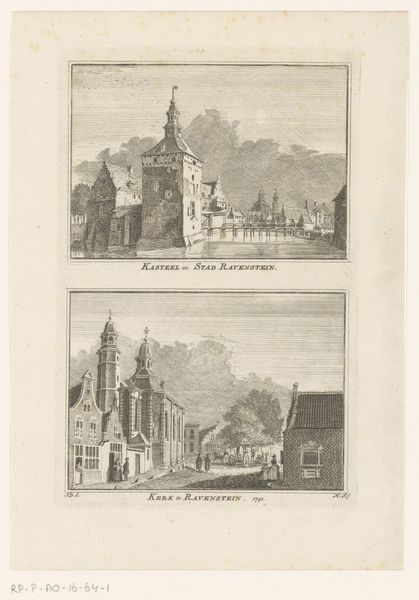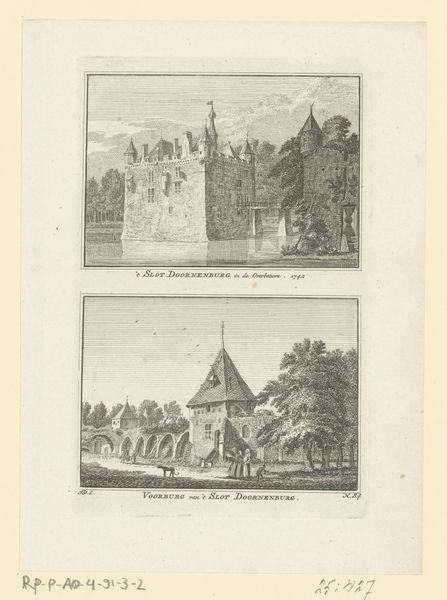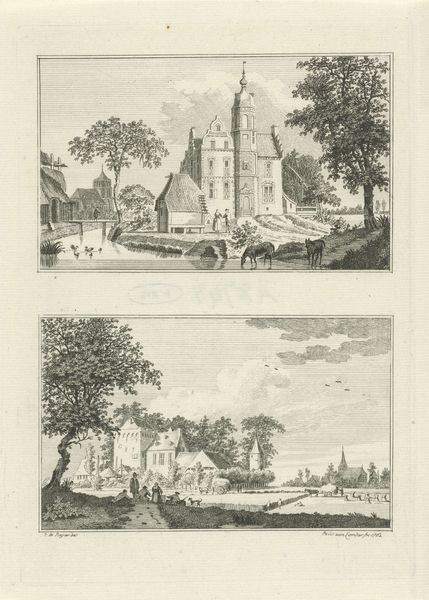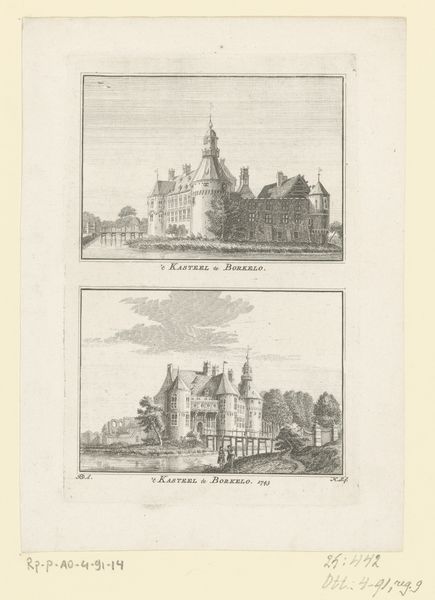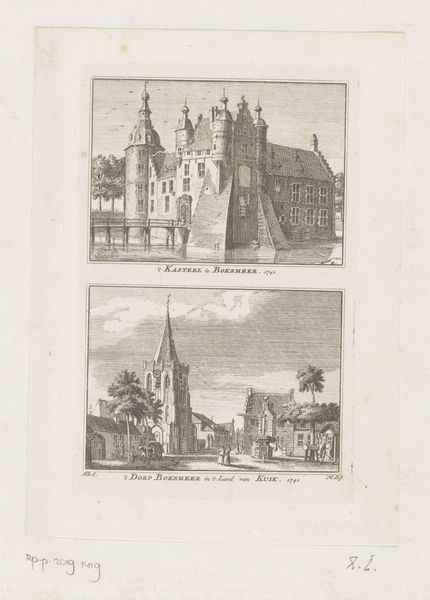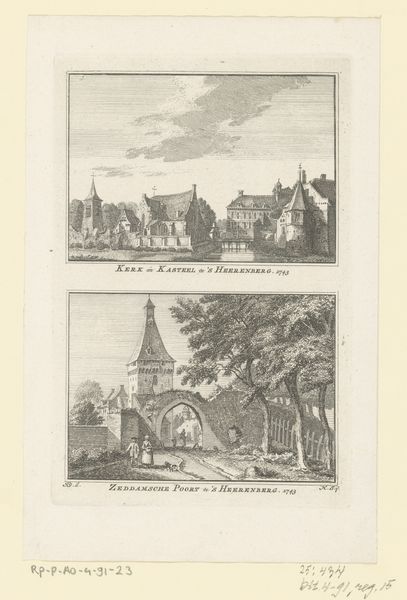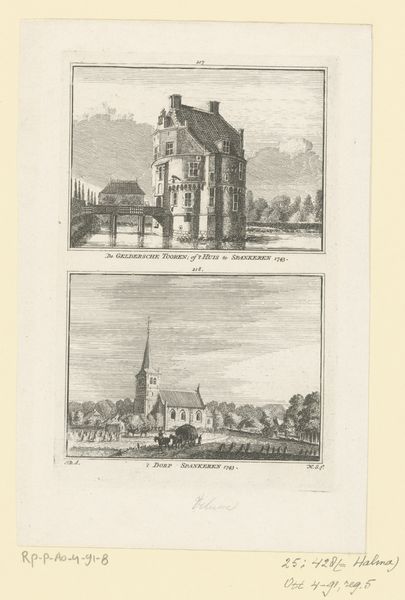
drawing, print, engraving
#
drawing
#
dutch-golden-age
# print
#
landscape
#
cityscape
#
engraving
#
building
Dimensions: height 84 mm, width 112 mm, height 82 mm, width 113 mm
Copyright: Rijks Museum: Open Domain
These two views of the Kloveniersdoelen in Amsterdam were etched by Abraham Rademaker sometime between 1675 and 1735. Rademaker was a master of the etching needle, using it here to create detailed depictions of Amsterdam’s architecture. The etching process begins with a metal plate, usually copper or zinc, coated with a waxy, acid-resistant substance called a ground. The artist then draws through the ground with a sharp needle, exposing the metal beneath. When the plate is submerged in acid, the exposed lines are bitten into the metal, creating grooves. These grooves hold the ink, which is then transferred to paper under high pressure. The resulting prints, like this one, can be reproduced in multiples. The technique allowed Rademaker to create a detailed architectural record, capturing the likeness of these civic structures. It’s a great example of how craft and industry intertwine, using a reproducible medium to share views of Amsterdam with a wider audience. By focusing on the material and making of the print, we can appreciate its social and cultural significance.
Comments
No comments
Be the first to comment and join the conversation on the ultimate creative platform.

